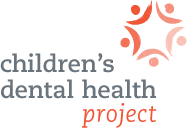The Children's Dental Health Project's blog
The ACA is losing its baby teeth
Six years ago, the Patient Protection and Affordable Care Act (ACA) was signed into law, marking one of the most significant health care reform efforts in history and a big win for oral health. The final version of the bill that crossed President Obama’s desk laid the framework for major reforms to the dental care delivery system with numerous oral health provisions.
Since then, CDHP and its partners have continued to shape the implementation of the ACA, especially the health insurance marketplaces (once known as exchanges), so that children and families are able to take full advantage of the inclusion of pediatric dental coverage as one of the ten Essential Health Benefits (EHBs).
So, after countless sign-on letters, responses to regulations, and meetings with state and federal policymakers, where do we stand?
It’s Complicated
Really, it is. Sure, more children have dental coverage than ever before and we’ve seen a shift towards integration of kids’ dental coverage into health plans along with the inclusion of no-cost preventive services like fluoride varnish by medical professionals. Let’s also not forget the elimination of annual and lifetime dollar limits for many kinds of dental insurance. There’s no question that it was a huge step forward when Congress made children’s dental benefits an essential piece of the coverage that must be offered to anyone getting insurance on the marketplaces, through a small employer, or the individual insurance market.
However, as we’ve seen, wrinkles in the law make this a bit more complex than originally intended. Qualified health plans (QHPs) in most marketplaces aren’t required to include or embed children’s dental coverage in their products if stand-alone dental plans are offering coverage on the marketplace. In some marketplaces, families who want dental coverage for their children must purchase it separately, resulting in additional premiums and cost-sharing. Furthermore, the same rules don’t apply to dental coverage when it’s purchased separately, meaning families may not receive all of the ACA’s consumer protections and affordability measures like cost-sharing reductions and premium tax credits. In short, buying coverage on the marketplaces is rarely simple for families which is why we have continuously sought to simplify and explain the process.
In addition, many of the law’s provisions aimed at bolstering public oral health infrastructure, workforce, and data collection remain unfunded by Congress.
Successes
Complications aside, we are seeing some promising trends in how pediatric dental coverage is treated under the ACA, from an increase in the percentage of health plans that integrate dental benefits to a greater degree of transparency in the information provided to consumers while shopping for dental coverage. In addition, CDHP and its partners were effective in reducing the maximum out-of-pocket expenses for families purchasing stand-alone dental coverage. And there’s no shortage of state-level innovation toward making dental coverage under the ACA work well. States like Connecticut and California, and the District of Columbia have taken the lead in implementing standard plan designs for QHPs that require every insurer on the marketplace to embed pediatric dental coverage in at least one standard plan at each metal tier. In addition, these standard plan designs maximize the inclusion of children’s dental benefits by protecting them from high medical deductibles. As HHS seeks to establish standard plan designs for QHPs sold on the federally-facilitated marketplaces, CDHP will certainly be encouraging a similar approach.
But as CDHP and organizations like MACPAC have pointed out, there’s much more work to be done in order to make marketplace coverage affordable for low- and moderate-income children and families, especially with the looming question of funding for CHIP.
Gaps in Information
So, how many more kids have dental coverage thanks to the ACA? Unfortunately, that’s a question we simply cannot answer at this time. According to the report for the most recent enrollment period from HHS, children aged 0-18 account for only about 8 percent of enrollment in stand-alone dental plans sold on the federally-facilitated marketplaces. Yet these reports do not include dental enrollment data for state-based marketplaces.
Furthermore, as CDHP has repeatedly pointed out, enrollment reports do not provide any information on enrollment in QHPs that embed pediatric dental coverage. Without data at this level of detail, it is impossible to tally how many kids have gotten dental coverage through the marketplaces, making any evaluation of the law’s impact on dental benefits incomplete.
However, even as we work to increase our ability to measure the number of kids with new dental coverage and improve affordability, the ACA has underscored the importance of dental care for children. As we look back on the last six years, we are grateful for the progress that has been made but we look forward to opportunities to make even greater advances in improving the oral health status of children. Happy Birthday, ACA!
